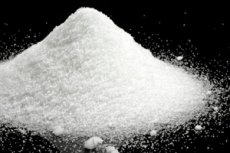Medical expert of the article
New publications
Sodium azide vapor poisoning
Last reviewed: 29.06.2025

All iLive content is medically reviewed or fact checked to ensure as much factual accuracy as possible.
We have strict sourcing guidelines and only link to reputable media sites, academic research institutions and, whenever possible, medically peer reviewed studies. Note that the numbers in parentheses ([1], [2], etc.) are clickable links to these studies.
If you feel that any of our content is inaccurate, out-of-date, or otherwise questionable, please select it and press Ctrl + Enter.

Sodium azide NaN3 is a compound of sodium amide and nitrous oxide. The substance is widely used in industry, namely as a gas-forming component in many car airbag systems. Sodium azide is highly toxic, but is slightly inferior to sodium cyanide.
Symptoms of the sodium azide poisoning
Inhalation of its vapors, ingestion or absorption through the skin can be fatal.
The clinical picture of sodium azide vapor exposure is very similar to cyanide poisoning:
- Tachycardia.
- Hypotension.
- Hyperventilation of the lungs.
- Headaches and dizziness.
- Ringing in my ears.
- Irritation of the mucous membranes of the eyes and nose.
- Decreased blood pressure.
- Seizures.
- Respiratory depression.
- Acute inflammation.
- Apathy.
- Tremor of the limbs, seizures.
- Cyanosis of the skin.
- Severe diarrhea with mucus.
Within 5 minutes after inhalation of the toxin, the victim develops suffocation and palpitations. In another 2-4 hours, weakness, decreased blood pressure, nausea, shortness of breath, and dizziness appear.
Death occurs within 40 minutes to 12 hours after poisoning. Autopsy reveals numerous hemorrhages in the mucous membranes of internal organs, edema of the brain and lungs.
Treatment of the sodium azide poisoning
Without emergency medical attention, there is a high risk of death. First aid for sodium azide poisoning includes the following steps:
- Ensure safety: If you suspect sodium azide poisoning, first ensure your own safety by wearing gloves and a mask to protect yourself from contact with the poisonous substance.
- Call anambulance: Get medical help right away or call emergency services for professional medical help.
- Move the victim to fresh air: If poisoning occurs indoors, move the victim to fresh air to reduce further inhalation of poisonous vapors.
- Provide respiratory support: If the casualty stops breathing or is not breathing properly, begin CPR.
- Do not give liquidsor food: Do not give the casualty any liquids or food by mouth as this may make the poisoning worse.
- Follow the ambulance operator's instructions: While waiting for medical help to arrive, follow the ambulance operator's instructions for first aid.
Sodium azide poisoning is a serious condition that requires specialized treatment in a medical facility. Here are the basic steps that can be taken to treat sodium azide poisoning:
- Medical evaluation and stabilization: The victim will be medically evaluated to determine the severity of the poisoning and to stabilize their condition. This may include measuring sodium azide levels in the blood, monitoring the cardiovascular system, respiration and other vital bodily functions.
- Artificial ventilation: If necessary, artificial ventilation is performed using a ventilator to maintain normal blood oxygenation.
- Detoxification: Detoxification procedures can be performed to remove sodium azide from the body. This may include infusion of fluids to speed up the excretion of the poison, and administration of antidotes such as thiosolimide to neutralize the poisonous effects of the azide.
- Electrolyte monitoring and maintenance of vital functions: The victim will be medically monitored for electrolyte imbalances and to maintain normal heart, kidney and other organ function.
- Treatment of complications: Sodium azide poisoning can cause various complications such as respiratory problems, arterial hypotension, cardiac arrhythmia and others. Treatment is aimed at eliminating these complications and maintaining vital body functions.
- Medical observation and rehabilitation: The victim will be observed in a medical facility to monitor his/her condition and provide rehabilitation measures if necessary.

